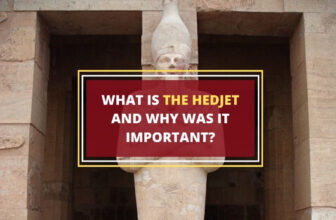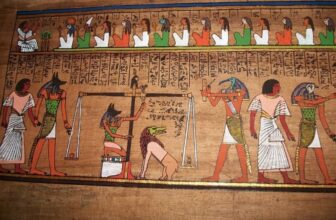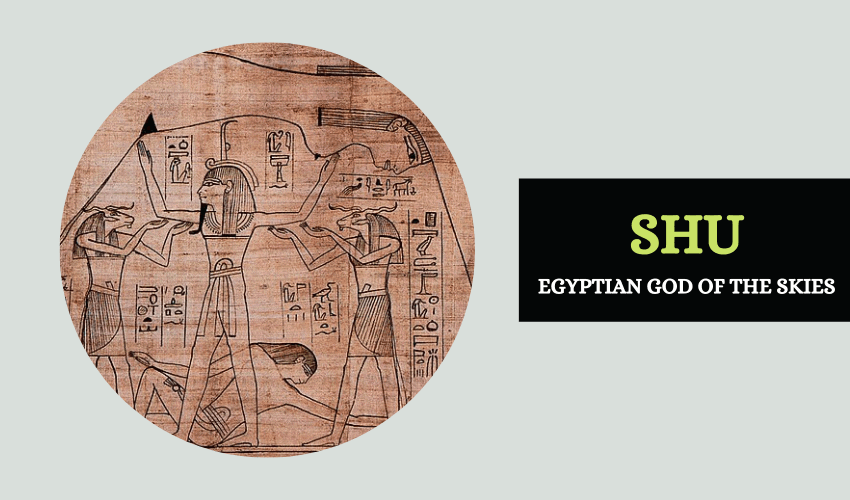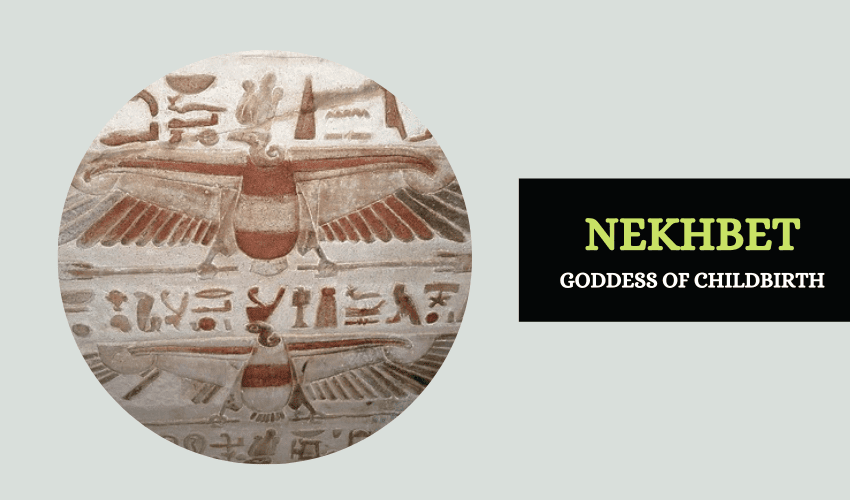
Table of Contents
In Egyptian mythology, Nekhbet was the Mother of Mothers and the patron and protector of the city of Nekheb. She also protected and guided the royal families of Egypt. Many kings and queens associated themselves with Nekhbet to establish their rule and sovereignty.
Let’s take a closer look at Nekhbet and her various roles in Egyptian mythology.
Origins of Nekhbet
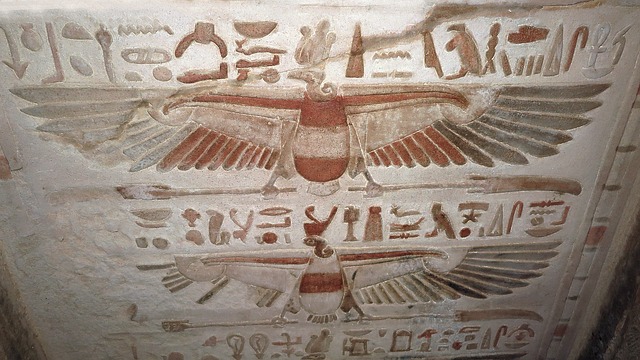
Nekhbet was a pre-dynastic goddess, who was worshiped in the city of Nekheb, where now stands the modern city of el-Kab, almost 80 km south of Luxor. Her worship dates back to the Predynastic period, around 3200 B.C., with one of the oldest temples in Egypt dedicated to her.
The shrine was held in great esteem, as it housed one of Egypt’s oldest oracles. Nekhbet’s temple was supposedly so large and magnificent, that the city of Nekheb was identified and known by it.
In terms of Nekhbet’s role, she was the protector of Upper Egypt, similar to Wadjet in Lower Egypt. With the unification of Upper and Lower Egypt, the symbols of Nekhbet and Wadjet, which were the vulture and the uraeus respectively, were depicted on the headdresses of kings to symbolize the union of the two deities and kingdoms.
Together they were referred to as the Two Ladies, the tutelary deities of the United Egypt. While Nekhbet was the protector of the people, Wadjet was a warrior goddess, and a defender of the city.
Nekhbet Role as a Deity of Childbirth
Nekhbet was associated with the White Crown of Upper Egypt at least since the Old Kingdom, and this explained her close connection to the person of the king. In many Egyptian art and paintings, she’s depicted as the nurse of the future king, strengthening her connection to childbirth.
She’s also portrayed in the Pyramid Texts as a great white cow, and in the mortuary temple of Sahura she is seen breast-feeding and nurturing the royal child. The goddess took on the form of a vulture, to protect and shield the new- born from evil spirits and disease. This is why the Greeks equated Nekhbet to their goddess of childbirth, Eileithya.
Nekhbet as a Funerary Deity
Nekhbet also protected deceased kings and the non-royal dead. She took on the form of a vulture and shielded the deceased with outspread wings. Nekhbet was also associated with Osiris, the god of the Underworld. Funerary art and images show Nekhbet alongside Osiris, in tombs and burial chambers.
Nekhbet and the Royal Family
Nekhbet was the patron of the Egyptian royal family. The queens of Egypt wore vulture headdresses as a mark of respect and adoration towards Nekhbet. Due to her affiliation with the royal family, Nekhbet became one of the most renowned goddesses of Egypt. The goddess preceded and guided the coronation festivities of the new king.
The symbols of Nehkhbet, such as the Shem, were etched onto the kings’ crown, as an emblem of guidance and protection. In Egyptian art, Nehkhbet was depicted as a vulture protecting the kings and their royal image. This role as protector of the king can be seen in the epic battle between Horus and Seth. Nehkhbet protected Horus and guided him on his attempt to reclaim the throne.
Nekhbet and Ra
Nekhbet is often described as being the Eye of Ra, and she protected the sun god on his journeys across the sky. Part of her role was to defend Ra from Apep, the serpent monster. In her position as the Eye of Ra, Nekhbet was associated with both the moon and sun deities.
Symbols of Nekhbet
Nekhbet was predominantly associated with three symbols, the Shen ring, a lotus, and the white Atef crown.
The Shen ring– In her vulture form, Nekhbet was perched on a circular object called the Shen ring. The word ‘Shen’ stands for ‘eternity’. The Shen ring consisted of divine power and protected anything that was kept within its folds.
The lotus– The lotus flower was a symbol of creation, rebirth and regeneration. Fish and frogs would lay their eggs in the floating lotus flowers, and as they hatched, Egyptians would see the lotus as a symbol for the creation of life. As a goddess of childbirth and fertility, Nekhbet was featured with the lotus.
The white Hedjet crown– The white Hedjet crown was an emblem of Egyptian royalty and kingship. Nekhbet was depicted with the white Hedjet crown to symbolize her relationship with the pharaoh.
Symbols and Symbolism of Nekhbet
- Nekhbet symbolized childbirth, and she protected the newly born offspring in the form of a vulture.
- In Egyptian mythology, Nekhbet symbolized the right to divine rule, and she guided the queens and pharaohs in securing the throne.
- In her vulture form, Nekhbet was an emblem of protection, and she guarded the souls of the deceased.
- Her best-known symbol is the vulture, and she’s typically depicted in vulture form in artwork. She’s usually shown hovering over the royal image, symbolic of her role as a protector of the rulers of Egypt.
- Nekhbet is typically shown holding a shen ring, which symbolizes eternity and protection for the royal family.
Nekhbet in Popular Culture
Nekhbet appears as a bird monster in the video game Final Fantasy 12. In Rick Riordan’s novel, The Throne of Fire, Nekhbet’s portrayed as an antagonist, and in the Japanese anime Tenshi Ni Narumon she’s depicted as a pet vulture.
In Brief
The legacy and worship of Nekhbet declined during the New Kingdom, and she was absorbed and assimilated into the powerful mother goddess, Mut. Although Mut incorporated many aspects of the older goddess, many Egyptians continued to remember and honor Nekhbet as the Mother of Mothers.




